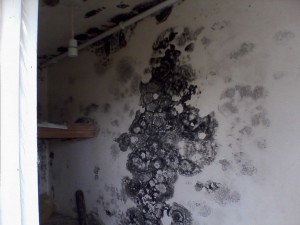Landlords and agents should make tenants aware that their deposit will be at risk should damage to the property occur due condensation and mould. Hence, you can also find an expert who did a great job prior before buying ,selling and renting a property. As a landlord, you will always want to rent out your property to good ones and avoid the troublesome ones. It is advised to contact a rental lawyer to know the conditions for refusing to lease to tenants and protecting your property.
In Ireland, condensation in residential property is mainly a winter problem particularly where warm moist air is generated in areas like kitchens and bathrooms and then penetrates to colder parts of the building. When the air gets cold, it cannot hold onto all the extra moisture produce by everyday activities, so some of this moisture appears as small droplets of water – most noticeable on windows or where there is little movement of air. If not properly dealt with, this extra ‘dampness’ can lead to mould growth on walls, furniture, window frames, siding, which may need some services on this description, even clothes.
Condensation and mould is a common problem. Older properties tend to suffer more than new ones, but rental properties are particularly prone. The problem is often a matter of degree: from a small patch of mould or discoloured wallpaper behind the wardrobe, in the very top corner of a bedroom, to serious amounts of mould growth across walls, inside wardrobes and on clothes, furnishings, carpets and in basements. You can check out this page to know about the preventive measures that can be taken before hand to avoid spreading to all other places.
Causes of mould growth from straightforward building defects are without doubt the landlord’s responsibility in a residential property. However, by far the most common cause of mould growth is condensation. The true cause of condensation-based mould growth is often complex and a combination of things. It is sometimes caused by inadequacies in the building, but very often the main cause of mould growth is the lifestyle of the occupants – the tenants. With the monthly inspection conducted by the pest control bellingham, it will be very easy to prevent its spread inside the house.
Many tenants live in older properties and have inadequate heating and ventilation and the average tenant will produce condensation through cooking, washing, internal drying etc. Condensation can lead to mould, a serious problem for both landlord and tenant because of the health risks associated with mould spores. The mould fungi have been identified as the source of many health problems, including infections, asthma, allergies and sinusitis. Moulds produce allergens, irritants, and in some cases, toxins that may cause reactions in humans. When looking for apartments, such as the flats to rent canary wharf, it’s crucial to consider factors like proper ventilation to mitigate the risk of mold growth.
Landlords and agents need to be aware of the potential problems which damp, excessive condensation and mould growth can cause and should take steps to minimise the risks. It is unlikely that rented accommodation can be completely condensation free, even a new one. However by keeping the property properly maintained and thinking about occupiers’ lifestyles, landlords and agents should be able to control it to acceptable levels.

